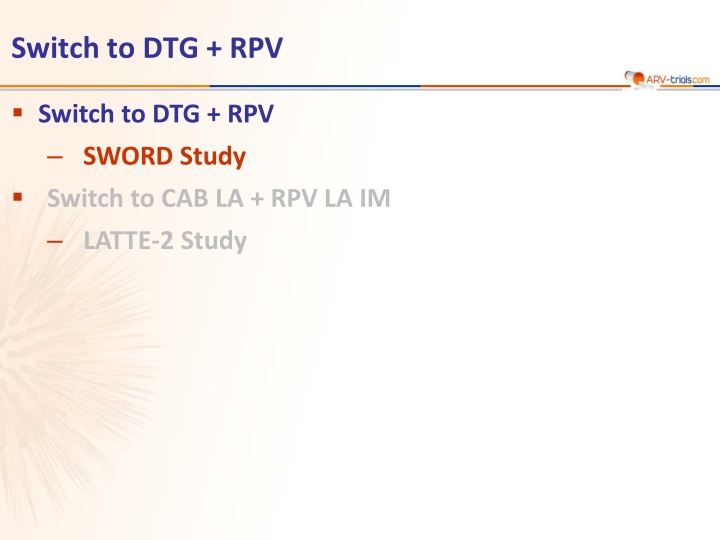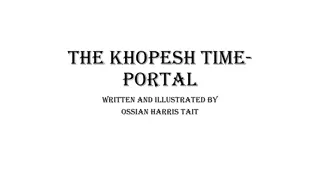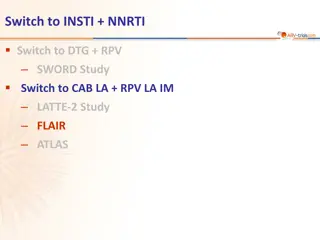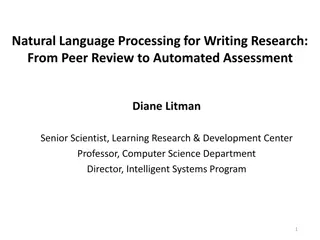
Studies on Switching to DTG + RPV in HIV Treatment
This study explores the efficacy of switching to DTG + RPV regimen in HIV patients who are on stable cART. The primary endpoint is to maintain HIV RNA levels below 50 c/mL at W48. Baseline characteristics, virologic outcomes, and patient disposition are analyzed. The results show non-inferiority of DTG + RPV compared to continuation of cART. Virologic outcomes and resistance mutations are also discussed.
Download Presentation

Please find below an Image/Link to download the presentation.
The content on the website is provided AS IS for your information and personal use only. It may not be sold, licensed, or shared on other websites without obtaining consent from the author. If you encounter any issues during the download, it is possible that the publisher has removed the file from their server.
You are allowed to download the files provided on this website for personal or commercial use, subject to the condition that they are used lawfully. All files are the property of their respective owners.
The content on the website is provided AS IS for your information and personal use only. It may not be sold, licensed, or shared on other websites without obtaining consent from the author.
E N D
Presentation Transcript
Switch to DTG + RPV Switch to DTG + RPV SWORD Study Switch to CAB LA + RPV LA IM LATTE-2 Study
SWORD-1 & 2 Studies: Switch to DTG + RPV Design Randomisation 1:1 Open-label W48 W148 HIV+ 18 years On stable cART 6 months (2 NRTI + INSTI or PI/r or NNRTI) 1stor 2ndcART with no prior change for virologic failure HIV RNA < 50 c/mL 12 months HBs Ag negative DTG 50 mg QD + RPV 25 mg QD N = 513 DTG 50 mg QD + RPV 25 mg QD Continuation of cART N = 511 Endpoint Primary: proportion of patients maintaining HIV RNA < 50 c/mL at W48 (ITT-exposed, snapshot) ; non-inferiority if lower margin of a two-sided 95% CI for the difference = - 8% for pooled studies (- 10% for each individual study) Llibre JM. Lancet. 2018;391:839-49 SWORD
SWORD-1 & 2 Studies: Switch to DTG + RPV Baseline characteristics and patient disposition DTG + RPV N = 513 43 23 18 611 Continuation cART N = 511 43 21 22 638 Mean age, years Female, % Race: non white, % CD4/mm3, median Baseline cART, % PI-based NNRTI-based INSTI-based With TDF Duration of cART prior to Day 1, median months Discontinuation by W52, N (%) Adverse event Lack of efficacy Investigator decision Consent withdrawal Lost to follow-up Protocol deviation Protocol-defined stopping criteria 26 54 20 73 51 27 54 19 70 53 29 (5.7%) 17 3 0 5 2 1 1 34 (6.7%) 3 3 3 14 3 7 1 Llibre JM. Lancet. 2018;391:839-49 SWORD
SWORD-1 & 2 Studies: Switch to DTG + RPV Virologic outcome at W48 (ITT-E, snapshot) Other virologic results at W48 HIV RNA < 50 c/mL (ITT-E snapshot) SWORD-1 95% DTG + RPV 96% continuation cART Adjusted : - 0.6% (95% CI: - 4.3 to + 3.0) SWORD-2 94% DTG + RPV 94% continuation cART Adjusted : 0.2% (95% CI: - 3.9 to + 4.2) DTG + RPV Continuation cART % 100 94.9 94.7 80 60 40 20 Confirmed virologic failure: HIV RNA 50 c/mL, retest 200 c/mL DTG + RPV, N = 2 Emergence of NNRTI resistance mutation (K101K/E) Continued cART, N = 2 No mutations 4.7 3.9 0.6 Virologic non-response 1.2 0 Success No virologic data HIV RNA < 50 c/mL Difference (95% CI) = - 0.2% (- 3.0 to 2.5) Llibre JM. Lancet. 2018;391:839-49 SWORD
80 SWORD-1 & 2 Studies: Switch to DTG + RPV HIV RNA of subject with NNRTI-resistant mutation 41-year-old female Pre-cART HIV RNA > 2 millions c/mL ; 1stcART: TDF/FTC/EFV Randomised to DTG + RPV Documented non-adherence before W36 K101K/E on genotype (fold change RPV = 1.2) ; phenotype: sensitive to RPV HIV RNA, c/mL 10,000,000 1,059,771 1,000,000 100,000 10,000 1018 1,000 100 <50 <50 W24 <50 <50 D1 <50 W4 <50 W8 <50 W12 10 Screening W36 W39 W45 1 Resuppressed on DTG + RPV Llibre JM. Lancet. 2018;391:839-49 SWORD
SWORD-1 & 2 Studies: Switch to DTG + RPV Adverse events at W48, % DTG + RPV N = 513 Continued cART N = 511 Adverse events related to study drug Grade 1-2 Grade 3-4 17 2 2 < 1 Serious adverse event 5 4 Adverse event leading to discontinuation CNS adverse event leading to withdrawal 4.1 (N = 21 *) N = 9 0.6 (N = 3) N = 1 Most common adverse events ( 5% of patients) Nasopharyngitis Headache Upper respiratory tract infection Diarrhea Back pain 10 8 5 6 3 10 5 7 5 6 * (some participants have more than 1 AE) ; anxiety (N = 4), depression (N = 3), insomnia (N = 2), depressed mood (N = 1), headache (N = 1), panic attack (N = 1), suicidal ideation (N = 1), tremor (N = 1), drug-induced liver injury (N = 1), eosinophilic pneumonia, acute (N = 1), abdominal distension (N = 2), dyspepsia (N = 2), peptic ulcer (N = 1), gastrointestinal haemorrhage (N = 1), pancreatitis, acute (N = 1), Hodgkin s disease (N = 1), Kaposi sarcoma (N = 1), plasmablastic lymphoma (N = 1) Llibre JM. Lancet. 2018;391:839-49 SWORD
SWORD-1 & 2 Studies: Switch to DTG + RPV Fasting lipids at baseline and W48 DTG + RPV Continuation cART mg/dL Baseline Baseline 5 200 187.6 188.1 W48 W48 185.9 186 4 3.8 3.8 150 3.7 3.7 133.1 132.0133.1 121.3 3 107.1108.1 108.3107.3 100 2 53.6 54.9 52.7 54.2 50 1 0 0 Total HDL LDL Triglycerides Total cholesterol: HDL ratio cholesterol cholesterol cholesterol, calculated Llibre JM. Lancet. 2018;391:839-49 SWORD
SWORD-1 & 2 Studies: Switch to DTG + RPV Conclusion at W48 A switch to a novel, once-daily 2 drug-regimen of DTG + RPV demonstrated high efficacy and was non-inferior to the continuation of a combined antiretroviral therapy in virologically suppressed HIV-1 infected adults The safety profiles of both DTG and RPV were consistent with their respective labels Switching to DTG + RPV had a neutral effect on lipids, while significantly improving bone turnover biomarkers Llibre JM. Lancet. 2018;391:839-49 SWORD
90 SWORD-1 & 2 Studies: Switch to DTG + RPV (W100 results) HIV RNA < 50 c/mL at W100, ITT snapshot % 93 95 95 100 89 80 DTG + RPV (N = 513) 60 Continuation cART (N = 511) 40 20 0 DO-W48 D0-W100 Deferred Switch DTG + RPV W52-W100 (N = 477) Confirmed virologic failure: 2 consecutive HIV RNA 50 c/mL, with HIV RNA 200 c/mL on confirmation sample 10/990 (1 %) patients on DTG + RPV between D0 and W100 No emergence of resistance mutation to INSTI Emergence of resistance mutation to NNRTI: 3/10 Aboud M, IAC 2018, Abs. THPEB047 SWORD
91 SWORD-1 & 2 Studies: Switch to DTG + RPV (W100 results) Virologic failure on DTG + RPV between D0 and W100, N = 10 * Resistance mutations Previous ARV regimen HIV RNA, c/mL DNA genotype at baseline Plasma genotype at failure Failure Fold Change NNRTI INSTI INNTI INSTI W24 EFV/TDF/FTC 88 ; 466 0 G193E 0 G193E DTG : 1.02 W36 EFV/TDF/FTC 1059 ; 771 0 0 K101K/E 0 RPV : 1.21 N155N/H, G163G/R Amplification failure W64 DTG/ABC/3TC 833 0 ? ND W76 ATV/ABC/3TC 79 ND ND ND ND - RPV : 1.61 DTG : 0.72 W88 DTG/ABC/3TC 278 0 0 E138E/A 0 W88 RPV/TDF/FTC 147 ND ND NR NR - K101E, E138A, M230M/L K101E, E138A Amplification failure RPV : 31 DTG : ND W100 EFV/TDF/FTC 651 G193E W100 ATV/r/TDF/FTC 280 0 0 0 0 - * Results available for 8/10 patients In red: emerging mutations Aboud M, IAC 2018, Abs. THPEB047 SWORD
90 SWORD-1 & 2 Studies: Switch to DTG + RPV (W100 results) Cumulative adverse events, % DTG + RPV N = 513 D0-W100 Deferred DTG + RPV N = 477 W52-W100 Adverse events related to study drug 20 12 Drug-related adverse events in 2% Headache Nausea 2 2 2 1 Serious adverse event 11 6 Adverse event leading to discontinuation Psychiatric disorders 7 (N = 34 *) 2.3 3 (N = 15 *) 1.0 Adverse events leading to DTG + RPV discontinuation: 49/990 (5%) at W100 including 17 for psychiatric disorders: suicidal ideation (N = 5), suicide (N = 1), anxiety (N = 4), depression (N = 5), depressed mood (N = 1), insomnia (N = 5), nightmare (N = 1), affective disorder (N = 1), abulia (N = 1), confusional state (N = 1), loss of libido (N = 1) Bone, atherogenesis and inflammation biomarkers: no change on DTG + 3TC between W48 and W100 Renal tubular proteinuria (RBP/creatininuria and 2M/creatininuria): improvement maintained in immediate switch group at W100 Aboud M, IAC 2018, Abs. THPEB047 SWORD
















